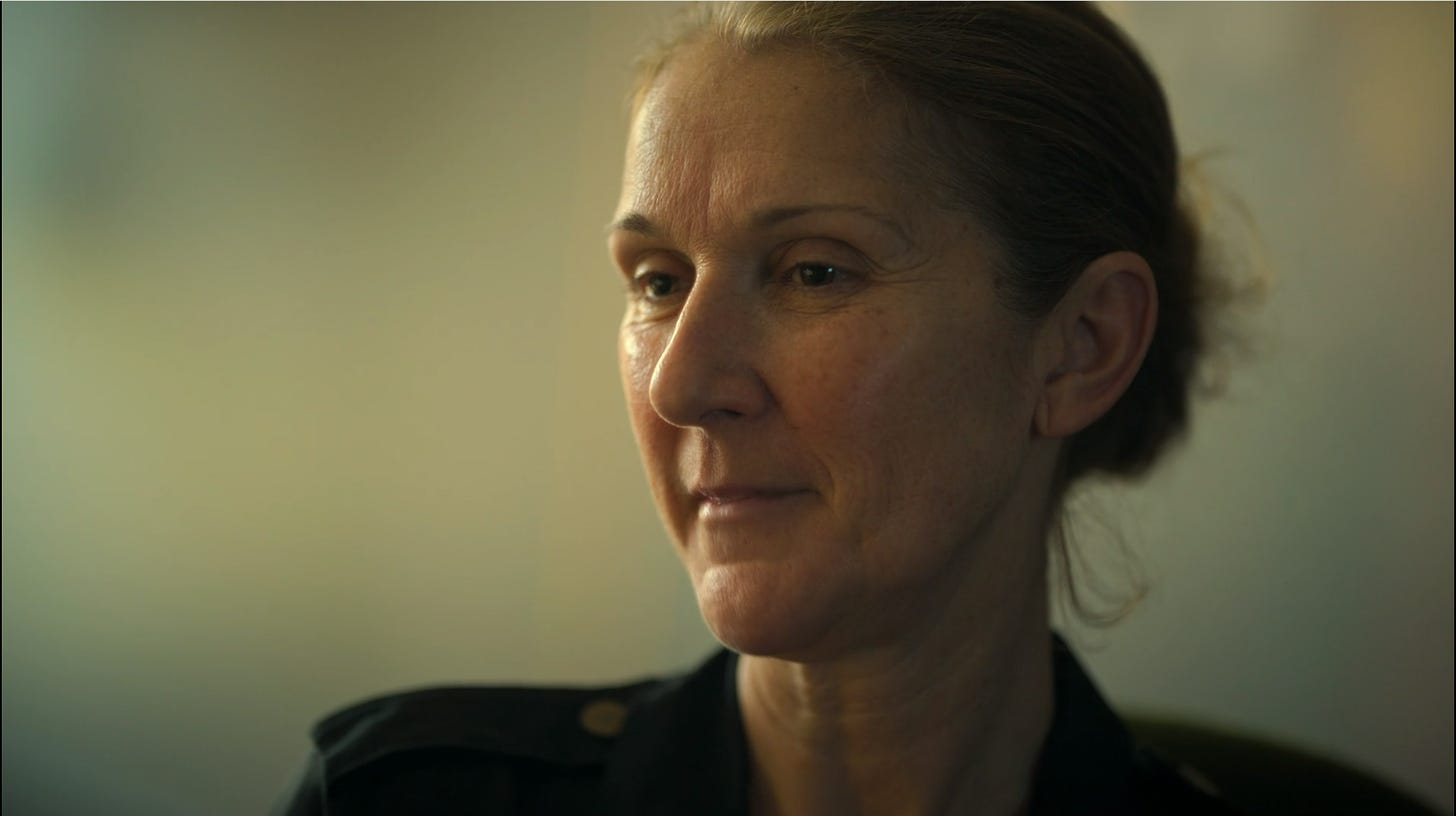No one is indifferent to Celine Dion. I’m on the fence about her music, personally, but it’s hard to deny that she’s an amazing performer. She’s been part of the western cultural zeitgeist for so long and a lot of people have Celine Dion memories, even if they’re just of her singing the infamous “My Heart Will Go On.” Her frankly creepy and ill-advised foray into unisex children’s clothing notwithstanding, she’s had an interesting and, for the most part, very respected career.
Of course it’s been all over the news that Dion had to cancel her shows for the foreseeable future due to Stiff Person Syndrome, an extremely rare disease that hits only two out of a million people, mostly women. She now has to take a barrage of drugs and her life looks very different, some of which is shown in her brand-new documentary, I Am: Celine Dion, which just dropped on Prime.
By far the hardest part of Dion’s condition for her, and the one everyone talks about, obviously, is not being able to sing. She doesn’t so much tell how it feels as describe it, and her descriptions hit differently depending on whether one is a singer. That’s not gatekeeping or anything; it’s hard to explain the mechanics of singing unless one has done it, and it’s just like any other skill.
Me, I did music ministry for fourteen years. While I’m obviously not even close to Dion’s level, I understood what she was talking about from a singer’s point of view, and it was hard to hear about what she’s been through. When a talent or ability is such a part of one’s identity, suddenly losing that part is disorienting and tragic.
Dion goes into detail about how she doesn’t have the range that she used to, her endurance is diminished, and tones are harder to sustain. Worst of all, her muscles in her chest cavity lock up or spasm and when Dion tries to breathe in to sing she feels blocked.
This is super important. Flexible abs and diaphragm are absolutely vital because that’s where a singer’s support and ability to project come from, and trained singers can fill almost their entire respiratory system when they inhale. To breathe in, the ribcage has to expand. To breathe out, the ribcage has to contract. If the muscles are stiff and painful the way Dion’s are now, proper singing doesn’t happen. It’s like hitting a wall.
But I digress.
The documentary does a lot of going back and forth between Dion’s current condition and her life with her family, including her childhood in Charlemagne, Quebec.
While it’s all interesting, there’s so much back and forth between the past and present that it can get a little jarring, but then again it’s done on a stream-of-consciencness basis, so it’s not too bad. I’m supremely glad that there’s none of the inane animation that pops up so often in documentaries nowadays. It’s all kept very soft and graceful, with lots of music, and it’s a very honest documentary. Dion doesn’t wear makeup for most of it, and she’s very candid about what she goes through on a daily basis.
What gets really tough is when Dion goes into what (I think) is either a seizure or one of her spasm episodes. It’s a bit scary, so anyone who finds that triggering might want to avoid this film or fast-forward through that particular part.
Dion forces herself to be honest no matter what, though, even during her episode. She’s asked if she wants the cameras out of the room, and she signals for them to stay. Once she gets up, her therapist plays her an “ending song,” and Dion sings along so seamlessly that it’s hard to tell her voice from the recording. She sells it with her usual power and verve as if to say, “No matter what, I’m still Celine Dion.”
I Am: Celine Dion is currently streaming on Amazon Prime. Rated PG.
My grade: A-
Principal Cast: Celine Dion
Directed by Irene Taylor.




